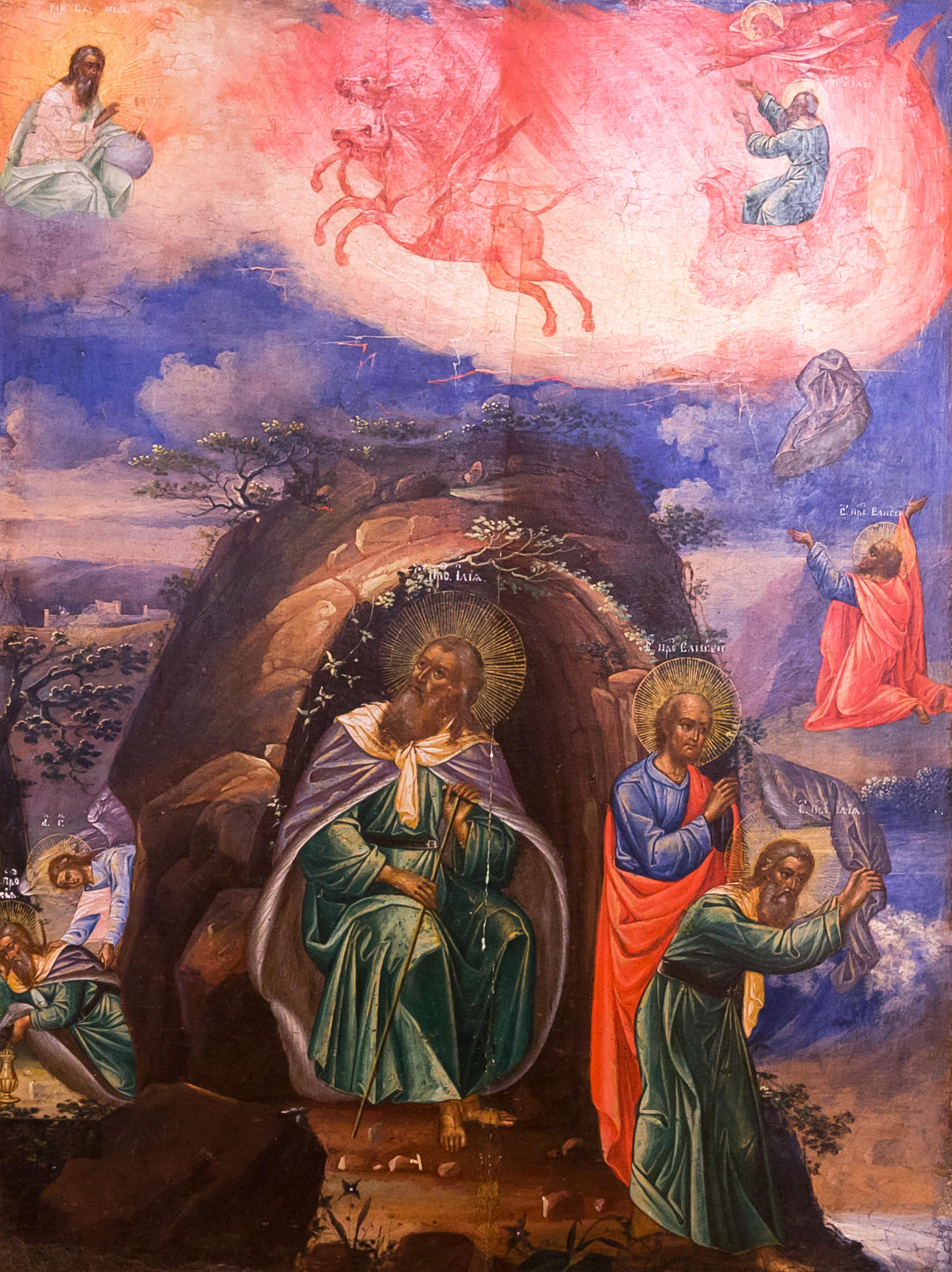Saint Elijah the Prophet was born in the city of Fesva in Gelead, east of the Jordan river; he is sometimes referred to as ‘of the inhabitants of Gilead’. Elijah became the first prophet to fight for justice and preservation of true faith. Elijah and his prophetic service are described in the Book of Kings of the Old Testament.
Elijah lived at the time of King Ahab of Israel and his wife Jezebel from Phoenicia. She attempted to establish the cult of Baal in the country. Practically all adherents of the one God of Israel, Jahveh, were banished from the country and a group of Phoenician priests appeared at the King’s court. Elijah tried to reason with the King. He warned him that if idolatry did not stop the entire land would be swept with great famine. According to the legend, it was he who prayed the drought into existence and the “sky was shut for three and a half years”.
In the third year God commanded that Elijah go to Ahav and promised to stop the drought. The King contested the prophet against the prophets of the other faith. He gathered the prophets on Mount Carmel to make an offering and see whose God was stronger – Baal or Jahveh. 450 prophets of Baal failed to set fire to the altar of the offering. Elijah restored the Jahveh altar, poured water on the wood and said a short prayer. The wood, the offering, the altar stone and the sand around caught fire and Elijah told the people to seize the false prophets and slay them. He then had to escape to the desert from Jezebel’s vengeance.
Elijah lived at the time of King Ahab of Israel and his wife Jezebel from Phoenicia. She attempted to establish the cult of Baal in the country. Practically all adherents of the one God of Israel, Jahveh, were banished from the country and a group of Phoenician priests appeared at the King’s court. Elijah tried to reason with the King. He warned him that if idolatry did not stop the entire land would be swept with great famine. According to the legend, it was he who prayed the drought into existence and the “sky was shut for three and a half years”.
In the third year God commanded that Elijah go to Ahav and promised to stop the drought. The King contested the prophet against the prophets of the other faith. He gathered the prophets on Mount Carmel to make an offering and see whose God was stronger – Baal or Jahveh. 450 prophets of Baal failed to set fire to the altar of the offering. Elijah restored the Jahveh altar, poured water on the wood and said a short prayer. The wood, the offering, the altar stone and the sand around caught fire and Elijah told the people to seize the false prophets and slay them. He then had to escape to the desert from Jezebel’s vengeance.



